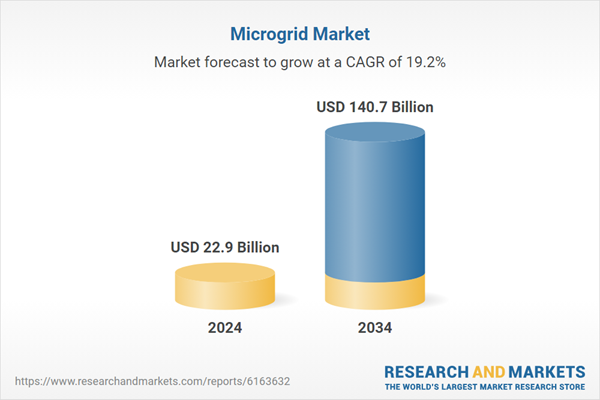In regions such as Latin America, where many rural communities still lack reliable access to electricity, the adoption of microgrids is experiencing rapid growth. The inability to provide consistent power in these areas not only hampers daily living but also limits economic development and access to essential services such as healthcare and education. Microgrids offer a viable solution, providing localized, independent power systems that can deliver reliable energy even in remote locations. This need for resilient, off-grid power solutions is further amplified by the increasing frequency of extreme weather events, such as hurricanes, floods, and droughts, which often disrupt the central grid infrastructure. These weather disruptions not only cause prolonged power outages but also expose the vulnerabilities of centralized energy systems. As a result, microgrids, with their ability to operate autonomously or in tandem with the main grid, are becoming a crucial technology for ensuring energy security in these areas.
The grid-connected segment held a 71.8% share in 2024 and is projected to grow at a CAGR of 18.8% through 2034. This is largely due to the increasing demand for high-load management capabilities and peak shaving, which can help reduce energy costs by minimizing reliance on expensive electricity during peak times. Moreover, ongoing investments by key players to expand grid connectivity to remote areas will further boost the adoption of grid-connected microgrids.
The AC segment held a 51.9% share in 2024 and is expected to grow at a CAGR of 19.2% through 2034. The demand for reliable power supply solutions, especially in regions vulnerable to grid outages, is a key driver behind the AC microgrid segment's growth. Additionally, advancements in energy storage, power electronics, and grid management systems are further supporting this trend, along with governmental initiatives promoting decentralized energy solutions.
U.S. Microgrid Market held 82.7% share and generated USD 4.7 billion in 2024. Government incentives and programs, such as the U.S. DOE Microgrid Initiative, are fueling the deployment of microgrids across the country. Ongoing state-level support in regions like California and New York is helping to improve energy resilience and promote sustainable energy practices, which is expected to create significant growth opportunities for the market.
Key players in the Global Microgrid Market Size include Advanced Microgrid Systems, ABB, Ameresco, Bloom Energy Corporation, BoxPower, Caterpillar, Delta Electronics, Exelon Corporation, Eaton, General Electric, General Microgrids, Heila Technologies, Honeywell International, Hitachi Energy, Lockheed Martin Corporation, PowerSecure, Power Analytics Global Corporation, Schneider Electric, S&C Electric Company, Siemens, and Toshiba Corporation. To strengthen their market position, companies in the microgrid sector focus on expanding their product offerings, enhancing technological capabilities, and forming strategic partnerships. By incorporating renewable energy sources, improving energy storage solutions, and integrating smart grid technologies, they are enhancing system efficiency and reliability.
This product will be delivered within 2-4 business days.
Table of Contents
Companies Mentioned
The companies profiled in this Microgrid market report include:- Advanced Microgrid Systems
- ABB
- Ameresco
- Bloom Energy Corporation
- BoxPower
- Caterpillar
- Delta Electronics
- Exelon Corporation
- Eaton
- General Electric
- General Microgrids
- Heila Technologies
- Honeywell International
- Hitachi Energy
- Lockheed Martin Corporation
- PowerSecure
- Power Analytics Global Corporation
- Schneider Electric
- S&C Electric Company
- Siemens
- Toshiba Corporation
Table Information
| Report Attribute | Details |
|---|---|
| No. of Pages | 140 |
| Published | July 2025 |
| Forecast Period | 2024 - 2034 |
| Estimated Market Value ( USD | $ 22.9 Billion |
| Forecasted Market Value ( USD | $ 140.7 Billion |
| Compound Annual Growth Rate | 19.2% |
| Regions Covered | Global |
| No. of Companies Mentioned | 22 |









